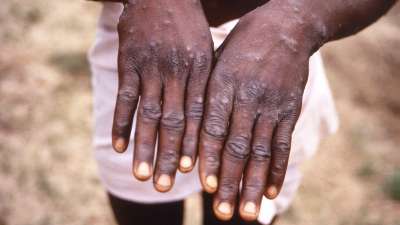
Mpox outbreak 2024
Introduction
The recent Mpox outbreak has caused significant concern among public health authorities and the general population. Formerly known as Monkeypox, this disease has been spreading rapidly, prompting urgent measures to control its transmission and protect public health.
What is Mpox?
Mpox is a viral zoonotic disease that primarily occurs in tropical rainforest areas of Central and West Africa. It is caused by the Mpox virus, which belongs to the Orthopoxvirus genus. The disease presents with symptoms similar to smallpox, though typically less severe.
Symptoms of Mpox
Mpox infection usually begins with the following symptoms:
- Fever
- Headache
- Muscle aches
- Backache
- Swollen lymph nodes
- Chills
- Exhaustion
Within 1 to 3 days (sometimes longer) after the appearance of fever, the patient develops a rash, often starting on the face and then spreading to other parts of the body. The rash progresses through several stages before finally forming a scab, which later falls off.
Transmission
Mpox can be transmitted through close contact with an infected person or animal, or with material contaminated with the virus. Human-to-human transmission occurs primarily through large respiratory droplets. However, the virus can also spread through direct contact with body fluids or lesion material, and indirect contact with lesion material, such as through contaminated clothing or linens.
Recent Outbreak and Spread
The recent outbreak has seen a rise in Mpox cases in both endemic and non-endemic regions. The rapid spread has been attributed to several factors, including increased human-to-human transmission and international travel.
Prevention and Control Measures
Public health authorities have emphasized the importance of prevention and control measures to mitigate the spread of Mpox. Key measures include:
- Vaccination: The smallpox vaccine has been found to provide some protection against Mpox. Health authorities are prioritizing vaccination for high-risk groups and those who have been in close contact with infected individuals.
- Isolation and Quarantine: Infected individuals should be isolated to prevent the spread of the virus. Quarantine measures may also be implemented for those who have been exposed to the virus.
- Personal Protective Equipment (PPE): Health workers and caregivers should use appropriate PPE when caring for Mpox patients to avoid infection.
- Hygiene Practices: Regular handwashing with soap and water, using alcohol-based hand sanitizers, and avoiding contact with infected animals are critical in preventing infection.
- Public Awareness: Educating the public about the symptoms, transmission, and prevention of Mpox is essential. Awareness campaigns can help people recognize the signs of Mpox and seek timely medical attention.
Treatment
There is no specific treatment for Mpox. However, the disease is usually self-limiting, with symptoms lasting from 2 to 4 weeks. Supportive care and symptomatic treatment are the primary approaches to managing the illness. In severe cases, antiviral medications may be considered.
Conclusion
The current Mpox outbreak necessitates vigilant public health measures and community cooperation to control its spread. Vaccination, isolation of infected individuals, and adherence to hygiene practices are critical components of the response strategy. Public awareness and timely medical intervention can significantly reduce the impact of the outbreak and prevent further transmission of the virus.
By staying informed and following recommended guidelines, we can collectively work towards controlling the Mpox outbreak and safeguarding public health.
New Policy Limits Haj Pilgrimage 2025


